Words Posy Gentles Photographs Polly Bennett, Amanda Thesiger
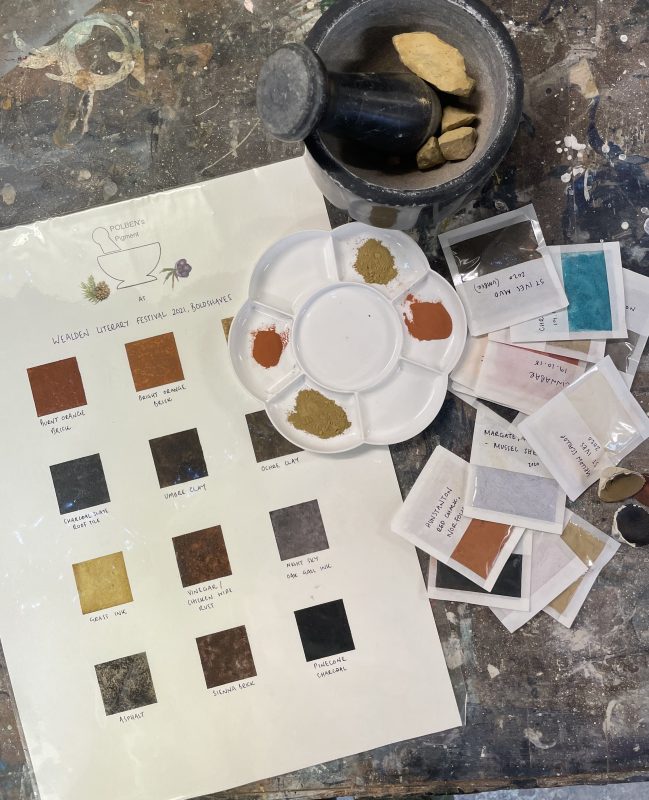
Learn to make natural pigments as part of this year’s Chelsea Fringe
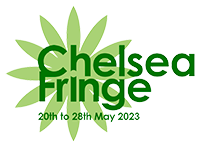
Chelsea Fringe 2023
The 2023 Chelsea Fringe Festival will be held from Saturday 20 May to Sunday 28 May and our local events will be held at Doddington Place Gardens, just outside Faversham.
Doddington Place has 10 acres of magnificently planted gardens including a woodland with towering technicolor camellias and rhododendrons, an avenue of 160-year-old giant sequoias, and an acclaimed rock garden which thrives without watering – definitely something gardeners need to be taking note of! It is open on Sundays and Wednesdays throughout the summer and you can keep up with other events through its website.

The vast yew hedges at Doddington Place © Clive Nichols
Doddington Place has been a supporter of the Chelsea Fringe since it emerged in 2012 as the idiosyncratic younger cousin of the stately Chelsea Flower Show. The Fringe runs for nine days over the Chelsea Flower Show week but has little to do with medals, hats and Pims, and everything to do with plants and gardens in all imaginable contexts. Events pop up all over the country and even as far afield as Seattle, Fukuoka, Melbourne and Milan.
The Chelsea Fringe is completely independent, encouraging links between gardens and art, literature, crafts, music, ecology, cookery and history. Community and guerilla gardening are celebrated. Nothing is commissioned or curated; there are no sponsors, funding or branding; no medals or judging committees. The Fringe says it relies solely on the efforts of volunteers and survives on its registration fees: ‘If it’s on topic, legal and interesting, it can go in the Fringe, no matter how outlandish or odd it may seem. Our mantra is: It’s all about the gardeners, not the gardens.’
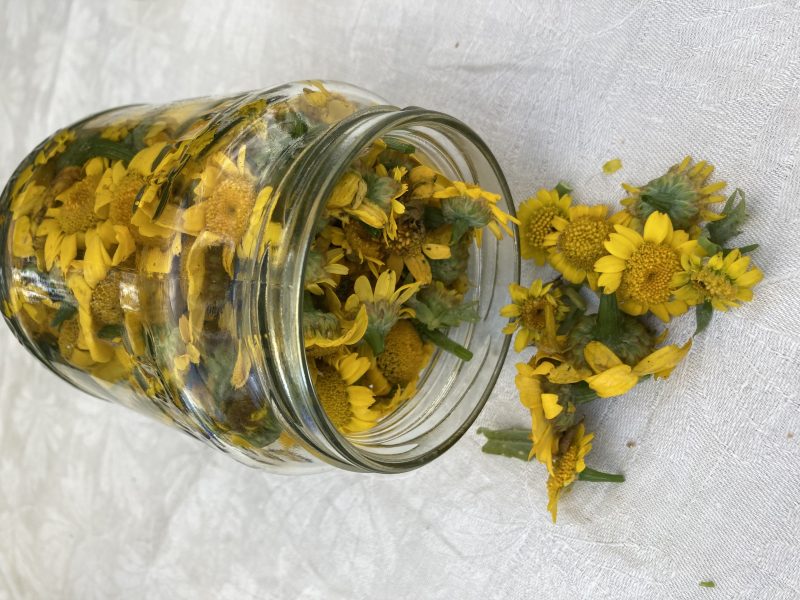
Marigolds for ink
Details of all this year’s events can be found on the Chelsea Fringe website. If you are in Faversham, you might still be able to book a place on the two events at Doddington Place. On 23 May, there is the Natural Pigment Making Workshop taught by Polly Bennett of Polbens Pigments, and on 26 May, there is the Natural Ink Making Workshop led by Amanda Thesiger.
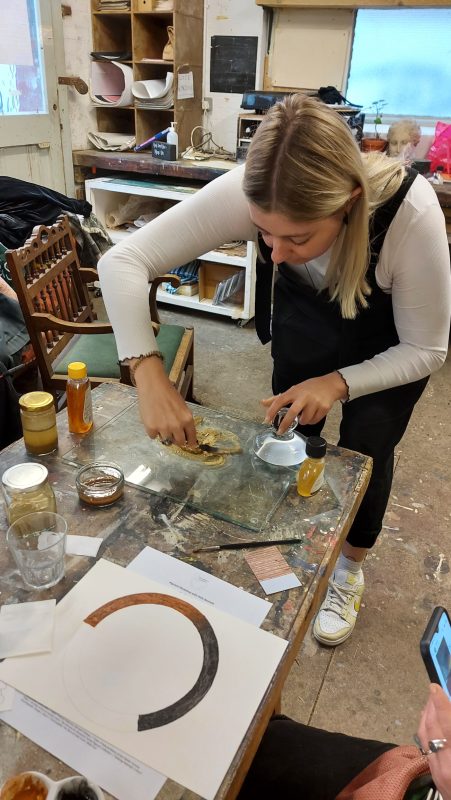
Polly Bennett: an environmental artist ‘portraying the land with the land’
Polly Bennett’s workshop will teach participants how to grind and purify natural pigment, gleaned from local earth, and turn the finished pigment into paint. At the end of the session, participants will take home a hand-painted colour chart, purified pigment and watercolour paint.
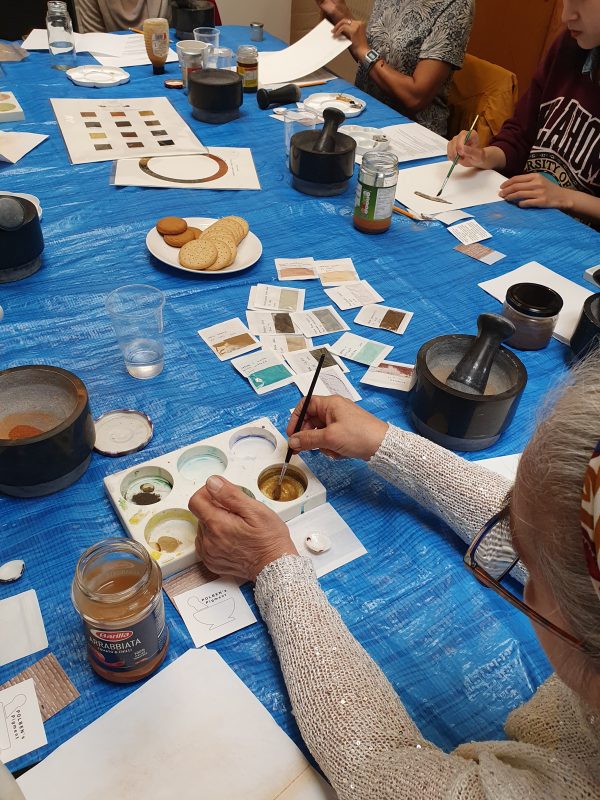
Grinding and mixing
During the workshop, they will learn the historical origins of pigment. Polly says: ‘The use of pigments is ingrained in our civilisation. The oldest use of pigments is a cave painting of a wild pig found recently in a cave in Indonesia. It is at least 45,500 years old.’ The workshop will look at the different types of natural pigment: mineral (including shell – calcium carbonate), metal compound, animal, plant and charcoal. It will also look at binders, in particular gum arabic and its history and sustainability. Attention will be given to the gathering of natural materials and processing pigments in a responsible way, as well as to health and safety.
Polly Bennett is an environmental artist ‘portraying the land with the land through traditional craftsmanship, using locally sourced materials’. She works in mixed media – sculpture, installation and 2D work. ‘All my projects are site-based and I use the local pigments as a response to the area.’ She is a member of the Wilderness Art Collective – ‘a group of creatives whose work discusses the natural world’. She set up Polbens Pigments to sell readymade natural pigments ready to be mixed with a binder. She also sells natural inks.
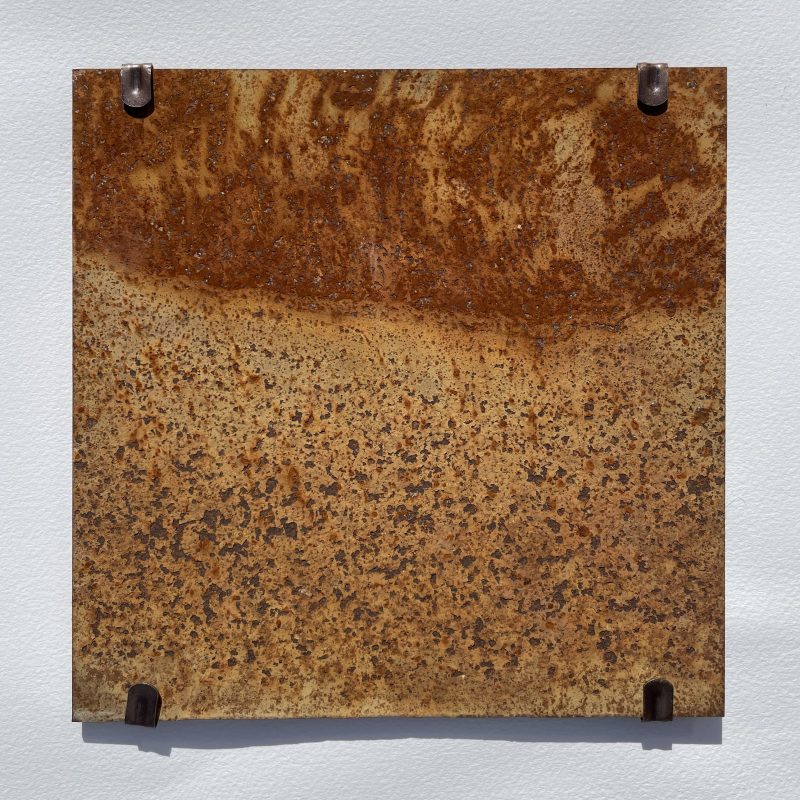
Wash Rust from the Thames on iron sheet by Polly Bennett
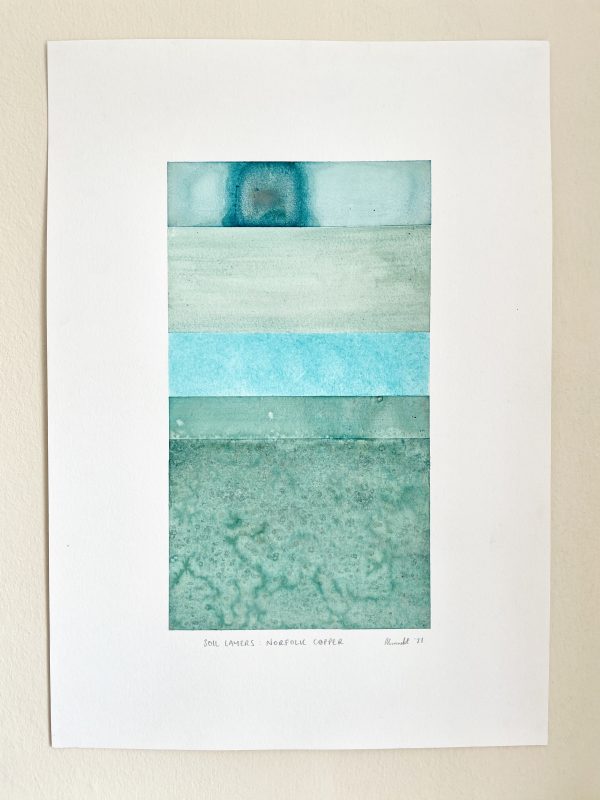
Soil Layers in Norfolk. Copper pigment ink and binder on paper by Polly Bennett
On 26 May, Amanda Thesiger will lead a workshop on making natural inks from plants foraged in the gardens at Doddington Place. Amanda is an artist whose practice has evolved to include a variety of media: ‘I work with natural inks, watercolours and oils; often combining these with drawn elements, print and collage.’

Work in natural inks by Amanda Thesiger
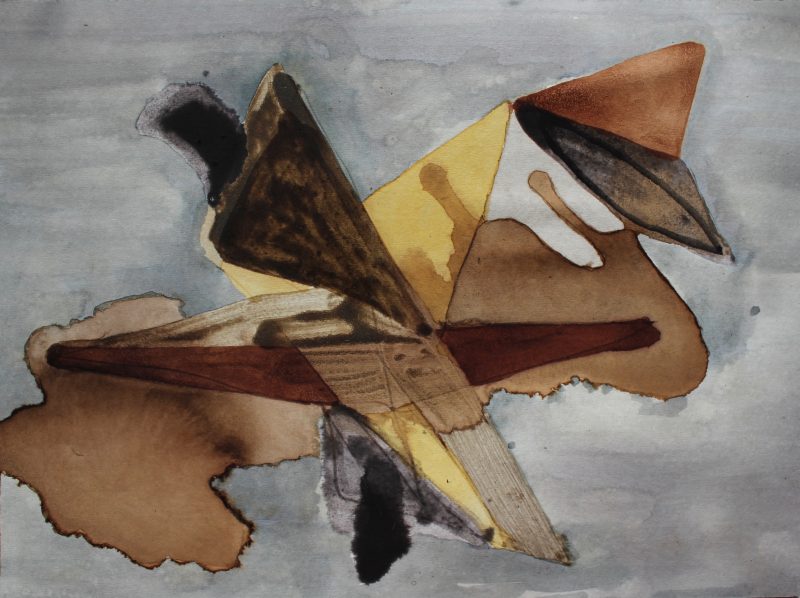
Flying Form by Amanda Thesiger in natural inks
Amanda sees this workshop as a chance for participants to make a different connection to plants and the garden. ‘When you look at a plant in terms of making ink out of it, and then draw the plant, there’s a completeness to it’. There is the curiosity and unpredictability as to what you will find, the practical element of grinding and pulping your material, and adding natural preservatives such as cloves or salt, to create the ink, and finally drawing or painting with the ink. Amanda says: ‘We’ll look at nature and think about colour. Drawings may just be about colour rather than form.’
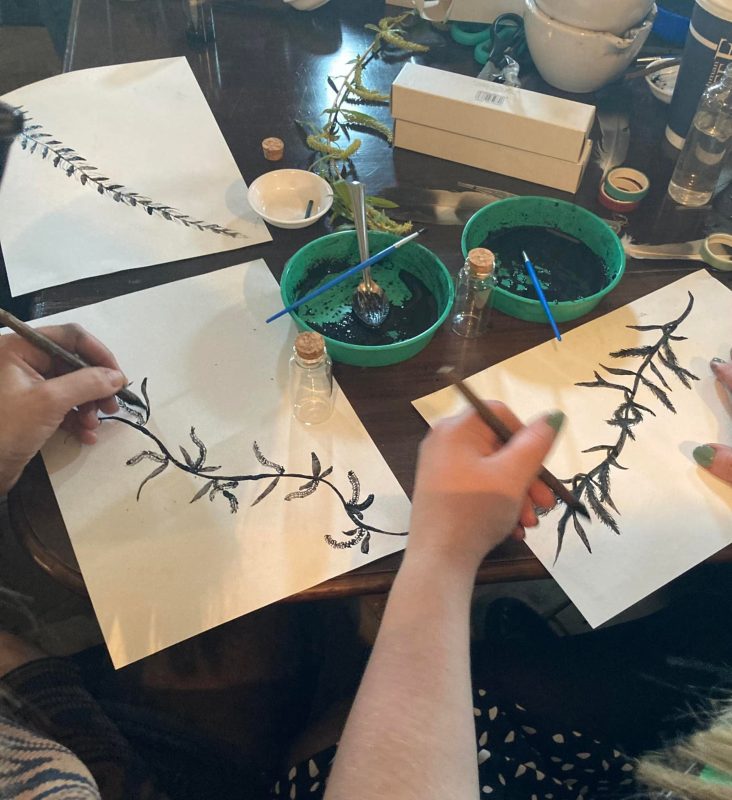
A workshop with Amanda Thesiger: Painting with natural inks
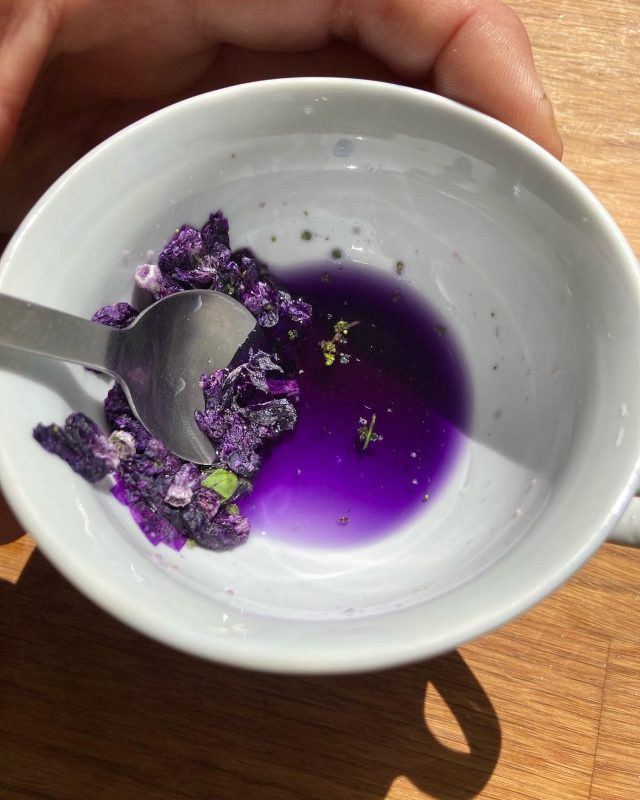
Ink from purple mallow found on a road verge
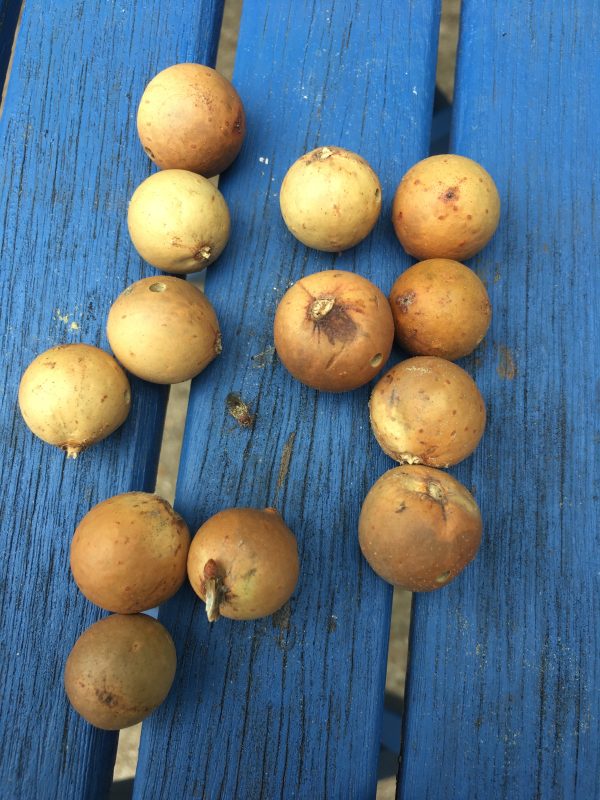
Oak marble galls – foraged for making natural ink
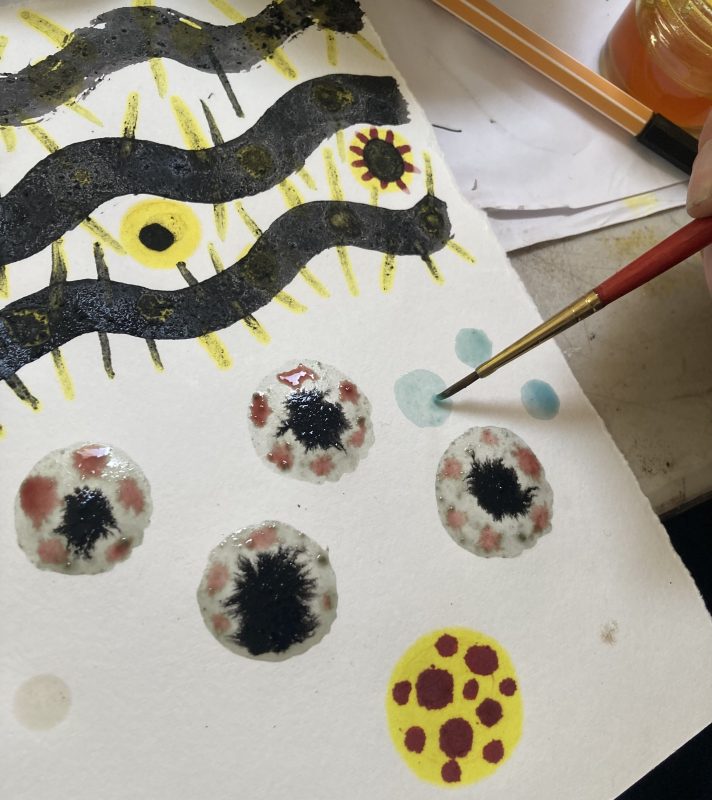
Painting with natural inks at a workshop
Amanda will supply all the materials including sketch books, but advises wearing protective clothing and layers as appropriate for foraging, working with inks and changeable weather.
As an artist, Amanda’s interest in natural ink developed when she was commissioned by the nationwide Back to the Brink initiative five years ago, and she started using them in her work. ‘I have always been a mixed media artist and I feel natural inks represent something – they are saying something just by being there. The colours you get from nature are like nothing else and they all complement each other beautifully.’
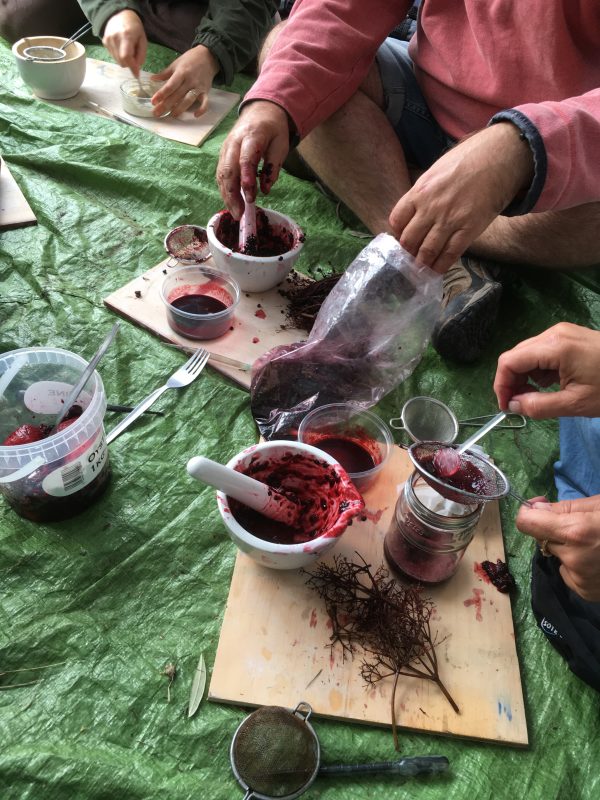
Pulverising and filtering elderberries
Text: Posy Gentles. Photographs: Polly Bennett, Amanda Thesiger